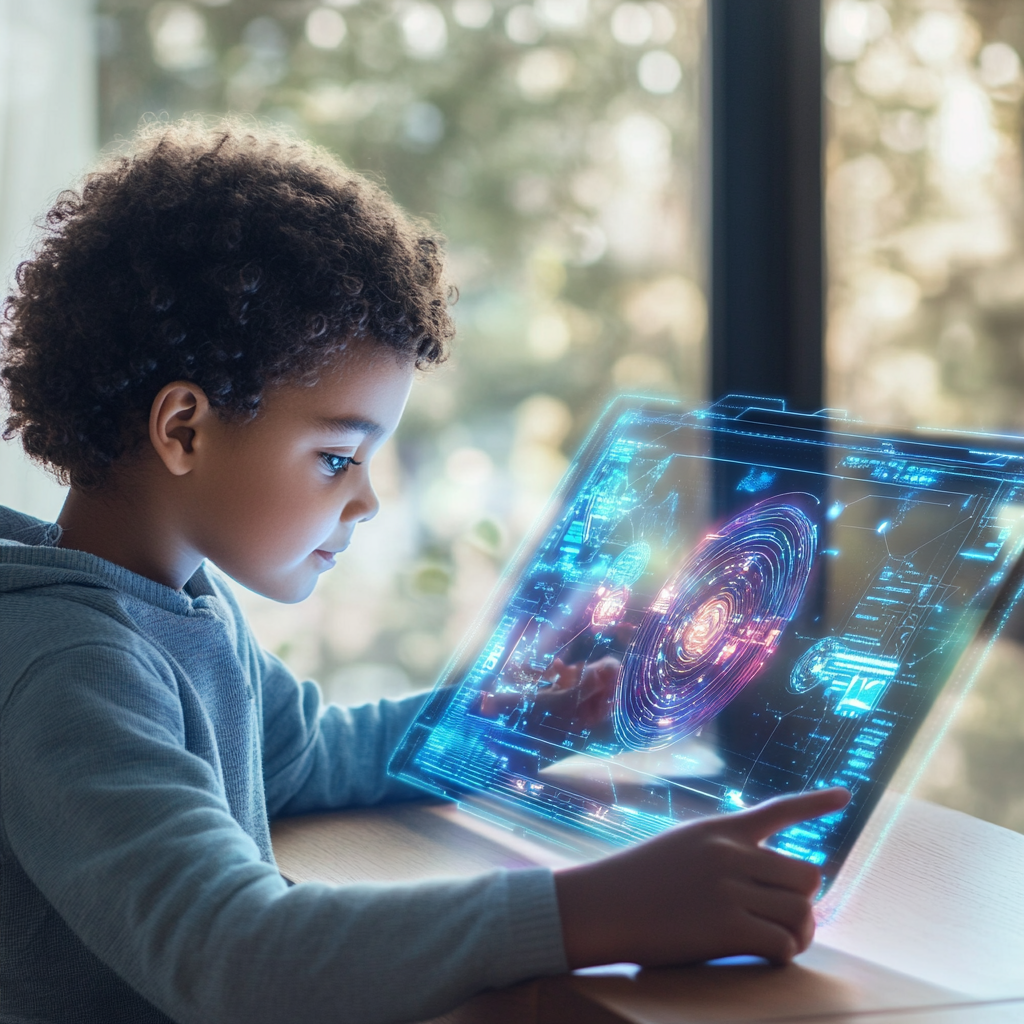AI is advancing faster than anyone expected — and the 2025 AI Index Report proves it. From AI models matching Nobel-level intellect to a 280x drop in computing costs, Stanford’s latest report maps the jaw-dropping acceleration of AI capabilities. The U.S. still leads in AI models and private investment, but China is closing the quality gap—and fast. Meanwhile, AI-driven labs are already making major scientific breakthroughs, like designing nanobodies to fight COVID-19, and outperforming doctors in diagnostic accuracy.
Generative AI: The Emerging Coworker Transforming Teams
AI is transforming the workplace by enhancing collaboration, speeding up tasks, and expanding access to expertise. A Harvard-Wharton-P&G study found individuals using AI performed as well as human teams, and AI-assisted teams were nearly three times more effective. AI also helped less experienced employees contribute more and encouraged interdisciplinary thinking. Pennsylvania’s ChatGPT pilot showed similar benefits, with employees saving 95 minutes daily and improving workflows. A national survey by JFF found that 57% of workers already see AI reshaping their jobs, though few receive formal training. These findings suggest AI isn’t just a tool for efficiency—it’s a partner reshaping how teams work, learn, and innovate.
Why Your Next Coworker Might Be an AI Agent
In 2025, your next coworker might not be human, but an autonomous AI agent capable of performing specialized, real-world tasks collaboratively and independently. Groundbreaking experiments from Google, Stanford, and Chan Zuckerberg BioHub reveal that teams of AI agents—ranging from computational biologists to critical reviewers—can rapidly innovate, discover new medical treatments, and respond dynamically to emerging. As AI becomes embedded into workplace dynamics, businesses face an exciting yet challenging future, where managing AI agents as digital employees might soon become as common as managing human teams.
Lessons from China’s DeepSeek: A Wake-Up Call for AI Innovation
DeepSeek's R1 model from China has sent shockwaves through the AI industry, matching OpenAI's top models while claiming development costs of just $5 million. Though experts dispute this figure, R1's emergence has triggered market value losses and security concerns. US companies quickly responded, with Google updating Gemini to outperform R1. The situation highlights tensions around export controls, security vulnerabilities, and the strategic importance of open-source AI development that aligns with democratic values. Security risks have led several US entities to ban DeepSeek. America must accelerate innovation and education to maintain AI leadership.
My AI Advisers: Lessons from a Year of Expert Digital Assistants
AI has become an invaluable partner for me, giving me instant access to a wide array of expert “assistants.” I now have a data analyst, driver with Waymo, brainstorming partner, legislative analyst, medical assistant, start-up advisor, graphics designer, and researcher at my fingertips, ready to help whenever I need specialized skills and knowledge.
America Can’t Afford to Lose the High-Skilled Talent Race in Today’s Competitive Markets
A recent social media clash that erupted between Elon Musk, Vivek Ramaswamy and Trump loyalists over high-skilled immigration reform exposed deep ideological rifts within the Republican coalition. But the importance of the debate over immigration policy and the American education system extends far beyond social media — solving these problems is critical to America’s competitiveness. By combining pragmatic immigration reforms, bold educational investments and innovative AI-driven learning, we can forge the “Talent Dominance” agenda we desperately need.
AI Tutors: Hype or Hope for Education?
In an analysis of Sal Khan's "Brave New Words" and the evolving landscape of AI in education, I present a case for AI-powered tutoring as a transformative force. Recent advancements in speech, image analysis, and emotional intelligence, combined with promising research studies showing significant learning gains, suggest AI tutoring could help address our urgent educational challenges like pandemic learning loss and chronic absenteeism.
Why the Veto of California Senate Bill 1047 Could Lead to Safer AI Policies
Gov. Gavin Newsom’s recent veto of California’s Senate Bill (SB) 1047, known as the Safe and Secure Innovation for Frontier Artificial Intelligence Models Act, reignited the debate about how best to regulate the rapidly evolving field of artificial intelligence. Newsom’s veto illustrates a cautious approach to regulating a new technology and could pave the way for more pragmatic AI safety policies.
The Promise and Limitations of AI in Education: A Nuanced Look at Emerging Research
New research reveals the transformative potential and complex realities of AI in education. From AI-powered grading systems that match human accuracy while saving countless hours, to AI tutors that both enhance and hinder learning, to AI's ability to reason like humans and predict social science experiments, these studies paint a nuanced picture of AI's role in the future of education. As the field rapidly evolves, enthusiasts and skeptics alike must grapple with the profound implications of AI for teaching and learning and ensure their views are shaped by research.
Preserving Trust and Freedom in the Age of AI
I was excited to contribute to a group of over 20 prominent AI researchers, legal experts, and tech industry leaders from institutions including OpenAI, the Partnership on AI, Microsoft, the University of Oxford, a16z crypto, and MIT on a paper proposing "personhood credentials" (PHCs) as a potential solution to the growing challenge of AI-powered online deception. PHCs would provide a privacy-preserving way for individuals to verify their humanity online without disclosing personal information. While implementation details remain to be determined, the core concept warrants serious consideration from policymakers and tech leaders as AI capabilities rapidly advance, threatening to erode the trust and accountability essential for societies to function.
Open AI Models: A Step Toward Innovation or a Threat to Security?
The increasing capabilities of AI have sparked an important debate: Should the "weights" that define a model's intelligence be openly accessible or tightly controlled? This article dives deep into the arguments on both sides. Proponents say open-weight models accelerate innovation, enable greater scrutiny for safety, and democratize AI capabilities. Critics warn of risks like misuse for disinformation or military purposes by adversaries. The piece examines recent developments like frontier open-weight models from Meta and Mistral, Mark Zuckerberg's case for openness, concerns about China's AI ambitions, and the US government's cautious approach.
Charting a Bipartisan Course: The Senate’s Roadmap for AI Policy
The recent AI policy roadmap from the bipartisan AI working group in Congress strikes a thoughtful balance between promoting AI innovation and addressing potential risks. It lays out a nuanced approach including increased AI safety efforts, crucial investments in domestic STEM talent, protections for children in the age of AI, and "grand challenge" programs to spur breakthroughs - all while avoiding hasty overregulation that could stifle progress
An AI Healthcare Coalition Suggests a Better Way of Approaching Responsible AI
In the rapidly evolving landscape of artificial intelligence (AI), the dialogue often veers between the extremes of stringent regulation, like the European Union’s AI Act, and laissez-faire approaches that risk unbridled technological advances without sufficient safeguards. Amidst this polarized debate, the Coalition for Health AI (CHAI) has emerged as a promising alternative approach that addresses the ethical, social, and economic complexities introduced by AI, while also supporting continued innovation.
Autonomous Vehicles: A Safer Road Ahead
Recent studies reveal autonomous vehicles (AVs) boast impressive safety records, with far fewer and less severe crashes compared to conventional cars. Advanced AV systems that constantly monitor surroundings, precisely follow traffic laws, and avoid dangerous situations contribute to their superior performance. With rapid technological improvements enabling AVs to learn from analyzing massive amounts of human driving data, they are poised to drastically reduce traffic accidents and fatalities. Further real-world experience for AVs promises to refine their systems and enhance safety even more. Regulators should enable this progress while enacting reasonable safeguards.
ChatGOV: Harnessing the Power of AI for Better Government Service Delivery
The capabilities of AI promise not only efficiency but potentially a more accessible interface for citizens. As governments begin to integrate these technologies into their service-delivery mechanisms, it is imperative to approach the adoption with due diligence, guided by robust frameworks like NIST’s AI RMF. With a combination of strategic foresight, stakeholder engagement, and capacity building, governments can harness the power of AI to truly transform public service, making it more responsive and citizen-centric than ever before.
Leveraging AI’s Immense Capabilities While Safeguarding the Mental Health of Our YouthLeveraging AI’s Immense Capabilities While Safeguarding the Mental Health of Our Youth
The rise of artificial intelligence (AI) coincides with a concerning public health crisis of loneliness and isolation, particularly among young people. According to a CDC survey, a shocking 44% of adolescents are dealing with constant feelings of sadness and hopelessness. As AI technology becomes more prevalent, concerns are growing about its potential to worsen these emotional struggles. This new technological context necessitates a deeper investigation into the role AI might play in intensifying these existing societal issues.
The Promise of Personalized Learning Never Delivered. Today’s AI Is Different
Over the past decade, many have been disappointed by the unfulfilled promises of technology transforming education. However, recent advancements in AI, such as OpenAI's GPT-4, may signal a genuine breakthrough. These large-language models have smarter capabilities, function as reasoning engines, use language as an interface, and are scaling rapidly thanks to tech giants. As a result, AI-powered tutoring and teaching assistants are emerging to provide individualized learning, automate administrative tasks, and offer constructive critiques on student writing. While there are limitations, it is expected that future iterations will address these issues. Harnessing AI's potential could lead to a future where education is more effective, equitable, and personalized, with teachers focusing on fostering meaningful connections with their students.
From Automation to Reinvention: How AI Is Shifting the Nature of Work
The rise of AI technologies like ChatGPT promises to boost global GDP by 7% in a decade, according to Goldman Sachs. However, this may disrupt 63% of US jobs, including higher-skilled professions like auditors and interpreters. These AI tools will change the nature of work, shifting focus from mundane tasks to more advanced, human-centric activities. Surprisingly, AI could benefit the least skilled workers, narrowing the performance gap among employees. While job displacement is inevitable, the larger disruption may be the creation of new, hybrid jobs combining domain expertise with AI skills. Policymakers must proactively invest in education and workforce training to ease these transitions and capitalize on AI's productivity potential.
Building Trust in AI: A Call for Clear Guidelines to Harness Its Benefits
Policymakers have yet to fully understand the profound effect the AI revolution will have on our economy, national security, and social well-being. AI, for all its benefits, will also present new risks, challenges, and tensions with our values. To prevent the worst consequences of AI, clear regulations are needed to harness its benefits while managing its risks.
Assessing the Threat of AI Misuse in Disinformation Campaigns
OpenAI. Georgetown University’s Center for Security and Emerging Technology and the Stanford Internet Observatory wrote a provocative report surfacing misinformation risks posed by AI. The report provides a thoughtful framework through which to think about the threat of AI-enabled influence operations and some of the steps that can minimize those risks along with their associated trade-offs.



















